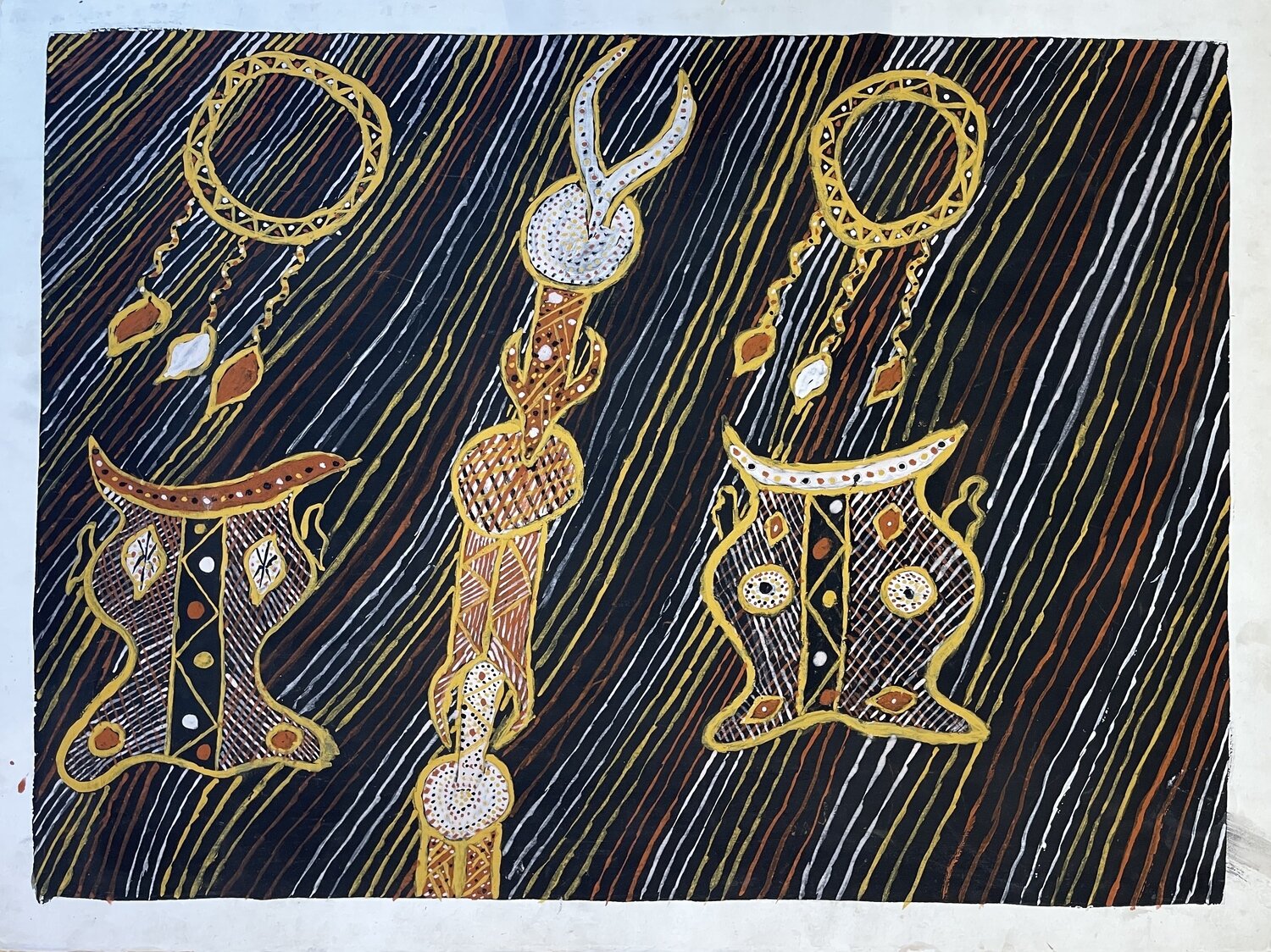Aquin Pikakui, Crocodile Dance, 57x76cm WOP7
Crocodile Dance by Aquin Pilakui: A Celebration of Tiwi Island Culture
In this painting we see the Pukamani pole in the centre, bark baskets and ceremonial headbands worn for the Crocodile Dance. Aquin Pilakui, a distinguished Tiwi Island outsider artist, is celebrated for his exquisite and fluid style. Working primarily with natural ochres on arches paper, Pilakui's traditional designs carry profound meaning and integrity, reflecting his rich cultural heritage. Guided towards excellence, his artworks are featured in galleries across Australia.
On the Tiwi Islands, dancing is an integral part of daily life and central to all ceremonies. Each Tiwi person has their own dreaming, or totem, inherited from their father, which includes Yirrikipayi (Crocodile), Jarrangini (Buffalo), Kitirika (Turtle), Tartuwali (Shark), Tarangini (Snake), Yingwati (Sugarbag), and Kirilima (Orange-footed Scrub Fowl). A Tiwi may not kill or eat their dreaming, maintaining a significant and respectful relationship with it. Children are encouraged to learn their dreaming dance at a very young age, fostering a deep connection to their cultural identity.
Tiwi people traditionally paint their bodies for ceremonies using natural earth pigments known as ochres. This tradition of mark making is the foundation for modern Tiwi art. Tiwi painting, in its origins, is the transcription of marks traced in ochre on the bodies of dancers during ceremonies.
GALLERY GONDWANA
ABN: 75 009 652 046
All prices displayed in AUD, GST included.
Gallery Gondwana acknowledges the First Peoples of this land and recognises their continuous connection to culture, community and Country.
CONTACT US
+61 417 75 74 75
+61 417 27 44 31
roslyn@gallerygondwana.com.au
PO Box 3770, Alice Springs NT 0871 Australia
Vatu Sanctuary
Saturate yourself and be inspired by the power of Aboriginal art in a living gallery environment.

All Rights Reserved | Gallery Gondwana
